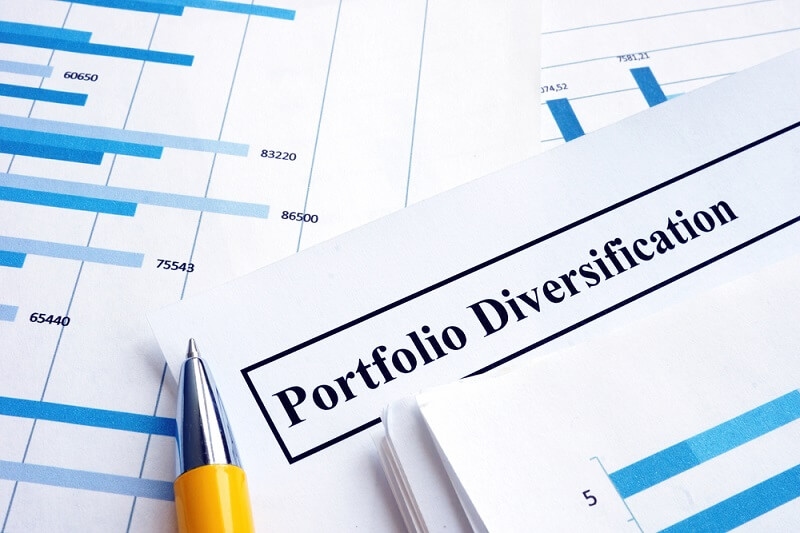
A stock portfolio should focus on long-term stability, growth, and other factors. But buying a few popular stocks will not help—an intentional and balanced plan is the way to go. Diversifying your stocks is an excellent step towards creating a long-term stock portfolio. It is a key part of investing and building a wealth-accumulating skill.
The comprehensive guide below will show you step-by-step plans to build your portfolio for long-term stability, growth, and longevity. Whether you are just beginning or saving for retirement, we will disclose the best diversified stock portfolio, explain why it matters, and help you avoid some of the common mistakes.
A diversified portfolio means owning stocks from different sectors, industries, and countries. This reduces risk because the overall portfolio relies less on one company or sector.
For example, if you only owned tech companies. If the tech sector crashes, your whole portfolio is in bad shape. However, suppose you own a tech company, a healthcare company, a consumer staples company, and an energy company. In that case, you will likely see a lesser loss, which will take much less time to recover.
Diversification = Balanced Risk + Steady Growth
Stock markets are inherently unpredictable and maddeningly volatile. Prices fluctuate daily due to many factors, including economic reports and earnings, based on investor enthusiasm or fear. Diversification helps even out these peaks and valleys while making your trip seem more predictable.
Here’s how diversification supports the compounding of wealth over time:
A well-constructed and amply diversified portfolio doesn't guarantee you won't see any losses, but it gives you a significantly lower chance of catastrophic losses.
A robust portfolio will begin with core holdings—investments you will most likely own for years, maybe even decades.
Potential core holdings include
If you start investing, a beginner's diversified stock portfolio guide should emphasize low-cost, high-diversity foundational stocks before beginning on niche picks.
To diversify effectively, you need to spread your investments across multiple sectors of the economy.
Each sector behaves differently based on economic cycles. For example, consumer staples often perform well during recessions, while tech thrives in economic expansions. This mix ensures your portfolio has a performance cushion regardless of the market climate.
Growth and value stocks represent two major investing styles, and both have a place in a diversified portfolio.
A balanced approach between these styles enhances your long-term growth while adding stability. When one style underperforms, the other may shine, helping your portfolio stay on track.
Many investors focus only on domestic stocks, but adding international exposure provides additional risk reduction and growth opportunities.
International stocks often move independently of U.S. stocks, giving you a hedge against local market downturns. Even a 15–20% allocation can significantly improve portfolio performance.
Low-cost diversified stock portfolio ETFs are ideal for instant diversification without picking individual stocks.
Examples include total market ETFs, S&P 500 ETFs, or sector-based ETFs. You can build a complete and efficient diversified stock portfolio for retirement or long-term growth with just a few funds.
Everyone has different investment goals and risk tolerance. A 25-year-old saving for retirement can afford more risk than someone nearing retirement.
If you’re investing, focusing on growth and retirement, a stock-heavy portfolio (80–90%) with proper diversification may be appropriate early on.

Over time, some investments grow faster than others, shifting your portfolio away from your desired allocation.
Rebalance once or twice a year. For example, if tech stocks surge and make up 50% of your portfolio (up from 25%), sell some and reinvest in underweighted sectors.
While diversification is vital, there is such a thing as owning too many stocks or funds. This leads to diversification, where too many similar assets dilute returns and confuse strategy.
Please keep it simple. A few well-chosen funds or stocks across sectors can be as adequate as a complicated mess of overlapping assets.
Trying to time the market or chase hot stocks often backfires. Instead, you can focus on consistent contributions and long-term strategies.
Over decades, the power of compounding rewards steady, disciplined investors, not market timers.
If you’re investing for retirement, using tax-advantaged accounts like IRAs or 401(k)s can amplify your wealth growth.
For example, a diversified stock portfolio for retirement within a Roth IRA grows completely tax-free if withdrawal conditions are met, significantly boosting long-term results.
Dividend-paying stocks provide regular income and often belong to stable, mature companies. Reinvesting dividends over time can dramatically accelerate portfolio growth.
Look for companies with a consistent history of paying and increasing dividends. This is especially useful as you approach retirement.
High fees can erode your returns over time. That’s why choosing low-cost diversified stock portfolio ETFs or commission-free brokers is essential.
Saving even 1% in fees annually could mean tens of thousands of extra dollars over decades.
Actual wealth growth from investing doesn’t happen overnight. Markets fluctuate, and setbacks are inevitable. But staying the course separates successful investors from those who panic-sell at the wrong time.
Your future self will thank you for the discipline and foresight you show today.
You don't have to be rich or a financial genius to create a decent and thorough portfolio. Anyone with a plan, patience, and strategy can learn how to build a diversified stock portfolio for a long-term investment return. By using the diversification tools for valuations—across sectors, styles, regions, and types of investments—you place yourself in a better position for success. The key is maintaining consistency, keeping your costs low, and challenging yourself as much as possible within your long-term goals. Therefore, the result creates a portfolio that can grow with you, fund your dreams, and spell the type of wealth you can count on.
This content was created by AI